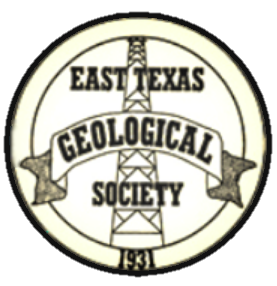APRIL 2018 DINNER MEETING
William A. Ambrose
of the Bureau of Economic Geology
presents
Giant Impacts in the First Billion Years of the Solar System
Wednesday, April 18, 2018
Social Hour 6 - 7 p.m.
Dinner & Talk 7 p.m.
at the Cascades
4511 Briarwood Road
Tyler, TX 75709
Family and Friends Are Welcome
Cost: $20
BIOGRAPHY
William Ambrose
William A. Ambrose is a Research Scientist at the Bureau of Economic Geology, the University of Texas at Austin, where he holds a Master of Arts degree in geological sciences. He is currently Vice-Chair of the Astrogeology Committee of the American Association of Petroleum Geologists (AAPG), having served as Co-Chair with geologist and former shuttle astronaut Jim Reilly. His research interests in planetary geology include energy resources in the Solar System and lunar geology, with an emphasis on crater morphology and secondary craters associated with large impact basins. Bill has given numerous presentations on planetary science at meetings of the LPSC (Lunar and Planetary Science Conference), GSA (Geological Society of America), and AAPG. He is co-editor of GSA Special Paper 477, “Recent Advances and Current Research Issues in Lunar Stratigraphy” and AAPG Memoir 101 “Energy Resources for Human Settlement in the Solar System and Earth’s Future in Space”.
ABSTRACT
Giant Impacts in the First Billion Years of the Solar System
William A. Ambrose
Mars, Mercury, the Moon, and many satellites of gas giants Jupiter, Saturn, and Uranus, are scarred with giant impact basins that record collisions from asteroids during the early history of the solar system (4.6 to 3.6 years ago). It is widely believed that the Moon owes its origin to an oblique collision of a Mars-sized planet with the Earth in the first few hundred million years of the Solar System. All planets suffered bombardment from other planetesimals and asteroids—these collisions formed gigantic basins, many of which are beautifully preserved on the Moon’s ancient scarred face. Giant impact basins, typically hundreds to thousands of kilometers in diameter, have a distinctive morphology. They contain multiple concentric rings, radially distributed scour valleys, fractures and radial graben, crater chains, and large (>20 km in diameter) secondary craters. Giant impacts deeply excavated and fractured planetary crusts, forming conduits for later upward migration of magma plumes.
Most giant nearside lunar basins that formed between 3.8 and 4.3 billion years ago are partly filled with basalt. The Serenitatis Basin contains a succession of layered extrusive units that are collectively 2 to 4 km thick, 750 km in diameter, and 300,000 to 500,000 km3 in volume. Some giant impact basins are associated with antipodal features caused by propagation of compressive waves through the planetary interior. These features include hilly, lineated, and jumbled terrain. Swirled terrain and remnant paleomagnetism are observed on the Moon in areas antipodal to the Imbrium Basin. In addition, some recent features on the Moon, such as Ina, antipodal to the South Pole-Aitken Basin, are inferred to have been caused by degassing of volatiles (important materials for sustaining human settlement) in areas of weak and fractured crust.
The Solar System also went through a second phase of planetary collisions from 4.1 to 3.8 billion years ago. Known as the Late Heavy Bombardment (LHB), this period of intense cratering is believed to have resulted from disruption of the asteroid belt by Jupiter, which migrated toward the inner Solar System as a result of gravitational resonance effects with Saturn. The Late Heavy Bombardment period is important in Earth history because the earliest evidence of life on Earth dates back to the end of the LHB.

